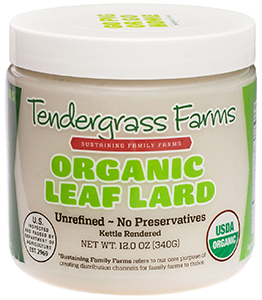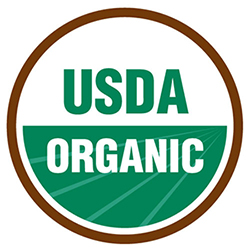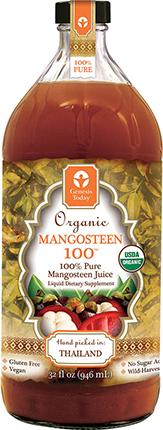If you’ve ever wondered about the regulations of using “organic” and “natural” on product labels, you aren’t alone. And, you have good reason to. According to the Organic Trade Association’s website, “sales of organic products in the United States jumped to $35.1 billion in 2013, up 11.5% from the previous year’s $31.5 billion and the fastest growth rate in five years.” With increasing interest in organic and natural products, brands of all different sizes are getting in on the action. Before you slap “organic” or “natural” onto your custom product labels, here are a few things you should know.

The Difference between “Organic” and “Natural”
“Organic” and “natural” are often mistaken as meaning the same thing, but legally speaking, they are quite different. Organic has stringent labeling regulations (we’ll get to that in a bit), whereas the term “natural” can be interpreted in various ways. To list “organic” on your product labels, certification by the U.S. Department of Agriculture’s (USDA) National Organic Program is mandatory.
“Natural” products, however, don’t currently have any such rules or regulations from either the USDA or Federal Drug Administration (FDA). In general, natural products are assumed to be minimally processed, but since there aren’t any specific rules on what constitutes a product as “natural,” it’s left to the discretion of manufacturers.
What Can Be Certified Organic
There are four categories of organic products that the USDA can certify:
- Crops: A plant that was grown to be harvested as food, livestock feed, fiber, or used to add nutrients to the field.
- Livestock: Animals used for food or in the production of food, fiber, or feed.
- Processed products: Items that are handled and packaged (e.g. pre-cut carrots) or combined, processed, and packaged (e.g. peanut butter).
- Wild crops: Plants from a growing site that is not cultivated or conventionally maintained. Seeds, nuts, and herbs are some examples of wild crops.
Certification costs vary depending on the certifying agent and the size, type, and complexity of the operation. This can result in a range of costs from a few hundred to several thousand dollars. Some of the fees involved include: the application fee, annual renewal fee, assessment of annual production or sales, and inspection fees. Financial assistance programs are available and can reimburse organizations up to 75% of the certification costs.
The Organic Certification Process
To obtain organic certification, you will need to have some basic information prepared before you begin the official process. The USDA-accredited certifying agent will need: a detailed description of the operation, history of substances applied to the land during the previous three years, the organic products (grown, raised or processed) themselves, and a written “Organic System Plan” that describes the practices and substances to be used.
Below is a quick overview of the organic certification process from beginning to end.
- Adopt organic practices; submit application and fees to certifying agent.
- Certifying agent reviews application to verify that practices comply with USDA organic regulations.
- An inspector conducts an on-site inspection of the applicant’s operation.
- Certifying agent reviews the application and the inspector’s report to determine if the applicant complies with the USDA organic regulations.
- Certifying agent issues the organic certificate.
Now that you have a better understanding of the organic certification process, let’s see the “do’s” and “don’ts” of using the organic seal after a producer has become certified.

Organic Seals on Product Labels
As previously mentioned, a product can’t be labeled with any organic claims unless the product has been certified organic. Some operations, however, are exempt from certification like organic farms that sell less than $5,000 in organic products per year (gross sales). Check out the USDA’s Do I Need to Be Certified Factsheet for more detailed information about which operations are required and exempt from organic certification.
If a producer is certified organic, there are two areas on the product labels that can have organic claims:
- Principal display panel: The area most likely to be seen by consumers at the time of purchase. The certifying agent reviews and approves each of the product labels to ensure compliance.
- Information panel: This area of the product label/packaging includes the list of ingredients contained in a product from highest to lower percentage, as well as other product information.

Using the Organic Seal
It’s important to note that not all product labels with organic claims are the same. The organic seal can only be used on the principal display panel if the product is 100% organic or if the product’s ingredients have less than 5% of non-organic content. Both types of organic products must also identify on the information panel their organic ingredients.
Multi-ingredient products that have at least 70% certified organic ingredients can’t use the organic seal but can say “Made With Organic ____” and list up to three ingredients or ingredient categories on the principal display panel. The product must also identify organic ingredients on the information panel.
If a multi-ingredient product contains less than 70% of certified organic ingredients, it can’t use the organic seal or have the word “organic” on the principal display panel. The product can only list the certified organic ingredients as organic on the ingredient list, as well as the percentage of organic ingredients.
Whichever type of organic product you have, the product label must include the name of the certifying agent on the information panel (except for products with less than 70% organic ingredients). For more details on organic labeling information, please visit the National Organic Program’s Organic Labeling page.
Final Thoughts: Be Careful with Product Labels!
Products that are labeled “organic” and “natural” can boost sales but they can also lead you into trouble if those claims are false. Although organic labeling has more stringent regulations, using “natural” on your product when the majority of it is processed or artificial can also hurt your business. Consumers are pretty savvy and can research the truthfulness of your product’s natural claims through the Internet. However, if your product has been certified organic or is mostly natural, there are a variety of ways you can emphasize those qualities with custom product labels. Our label experts would be happy to show you how!


